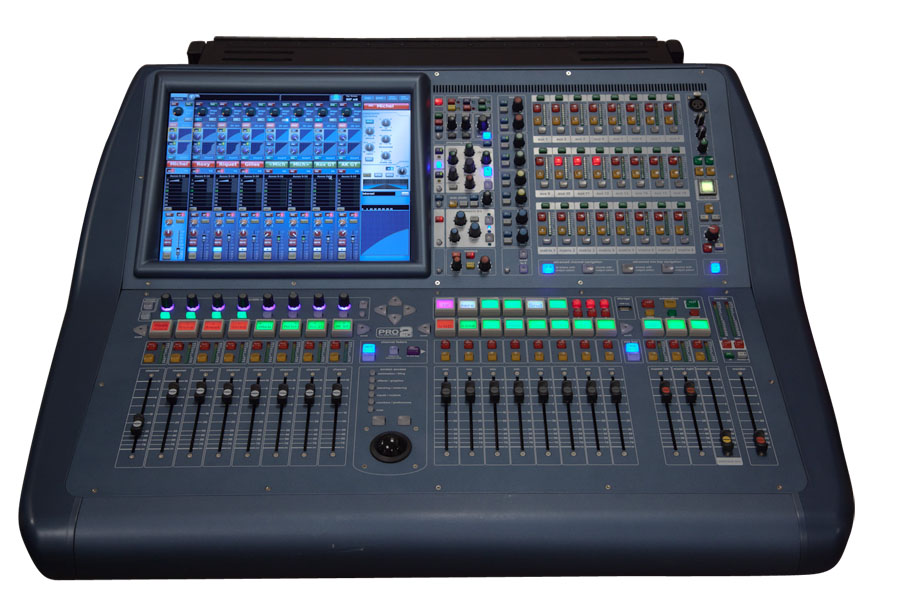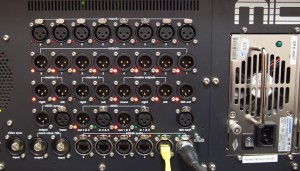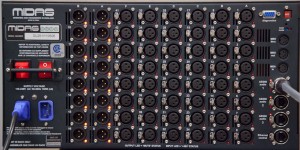Undisputed and highly respected leader on the high-end analog console market, Midas took its time before tackling the growing sector of digital consoles. After a strategic observation period, the British firm finally unveiled in 2007 the XL8, an uncompromising digital mixing system, carrying over all of the audio qualities of its illustrious predecessors (Heritage, XL4, XL3 etc.) but also some new, innovative and original operating solutions. Unfortunately, due to its size and its elitist price positioning, five years after its release, the XL8 is still an object of unfulfilled fantasy and desire for most sound engineers.

Because of economic reality, though, Midas – now part of Music Group (Behringer) – has been compelled to offer a range more in line with available budgets and market needs, without losing its soul.
We chose to test the smallest*, the most recent and also the least expensive in the PRO range (which now includes five sizes): the PRO2C, where “C” indicates “compact”. So, as the manufacturer promises, has this lastest addition kept something of the legendary XL8 in its genes?
* Actually, they are also now introducing a PRO1.
Quick overview
PRO2C
is a shortened version of the PRO2, featuring twenty faders instead of 28. Three of these are dedicated to mains and one to monitoring. It weighs 37 kg and has a footprint of 88.2 cm (L) x 73 cm (D). For a so-called compact version, this is still a lot both in terms of weight and size. The dedicated flight case is solid and well crafted, well designed with external bumpers, internal padding and various internal compartments… but it is heavy!
The console can manage 64 channels of processing distributed in 56 MIC/Line inputs, 8 aux returns and 27 phase-coherent mix buses (aligned to the sample), 16 of which can be configured as auxiliary mix or sub-group buses and 8 matrix buses. Matrices can be fed equally from buses or from input channels. They can therefore be used as additional aux buses. All the buses can be configured as a stereo pair (except mono, of course).
In its basic configuration (the one we tested), the control surface is supplied with the DL251 stage box (48 MIC/Line inputs and 16 outputs) and with two 100 m reels of CAT5e network cable.


Locally, on the control surface, you have access to eight balanced XLR input/output connectors, two AES3 in/out, two L/R stereo monitor outputs, XLR outputs for mains (L,C, R), six AES50 ports, MIDI ports (in, out, thru) and the usual talkback in and out. There is also an Ethernet control port, a USB port and a DVI video output (screen). In addition to the DL251, the console can interface with the DL252 (16 inputs, 48 outputs), or with other stage boxes of the brand (DL351 and 451) and also with the DL431 splitter (24 inputs to 5 splits) and, of course, with the Klark-Teknik DN9696 digital recorder (96 tracks at 96 kHz) and the DN9650 format converter to convert AES50 to EtherSound, Dante, MADI …








